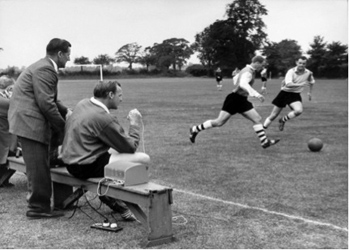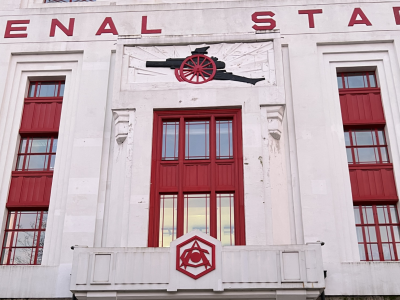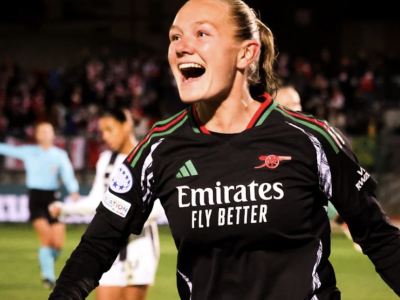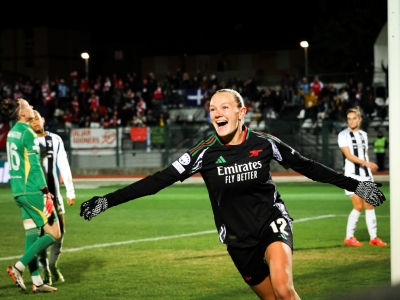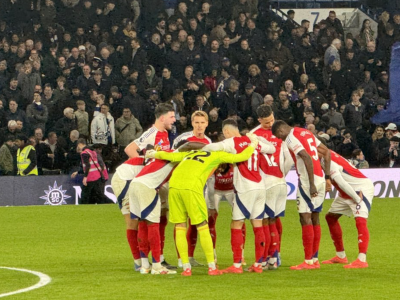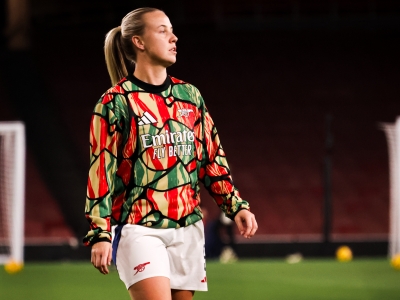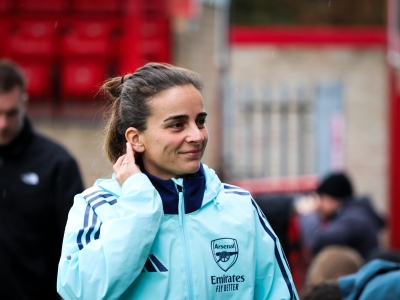The season starts with Arsenal meeting their old foes from eight miles down the road, West Ham United – a duel which has fluctuated in intensity over the years and actually dates back to late nineteenth century – before the Hammers were actually founded and prior to Arsenal crossing the river. One commonality that Arsenal and West Ham share is that they were both founded as a by-product of nineteenth century industrialization in London and the growth of leisure time for the working man as a result of progressive legislation which reduced working hours during the latter half of that century. As shown by one of my previous articles on the Football Speak blog site both Arsenal and West Ham’s predecessor club, Old Castle Swifts (along with their East London rivals Millwall) were predominantly founded by Scottish migrant workers at a time when rugby had been the dominant sport in the south of England When Old Castle Swifts had dissolved in 1895, into the void came Arnold Hills of the Thames Ironworks, who – as elaborated on in another one of my previous articles - created a works football side to heal strained relations with his workers. The Irons’ first ever fixture during the 1895/96 season had been against the reserve side of Royal Ordinance Factories FC – a work side founded by David Danskin at the Royal Arsenal at Woolwich in 1893 to replace Woolwich Arsenal who that year turned professional and were founder members of the Southern League. The Irons’ first captain had been Robert Stevenson, a Scottish full back who previously captained Woolwich Arsenal a couple of years previously and was described as: ‘invaluable as an advisor to the fathers of the club’. Later on in that first season, Thames Ironworks were also to host a ground breaking floodlit friendly with Woolwich Arsenal, which the latter won 5-3.
There had been quite a few early friendly fixtures between the two sides – dating back to the days of Thames Ironworks and Woolwich Arsenal - however as pointed out by @HarlowGooner on Twitter last season even by the late 1960s, official fixtures between Arsenal and West Ham United had actually been few and far between with the Hammers actually having the better record from those few fixtures at that point. West Ham were elected to the Football League after the First World War in 1919 and their first fixture of note had been the FA Cup Final of 1923 – the very first game to be held at Wembley Stadium.
The first few FA Cup Finals after the Great War achieved an under-capacity crowd and the FA undertook a major advertising campaign to boost the Cup Final attendance and but for PC Scorey on his white horse, the result could have been disastrous. The official attendance figure had been 126,000, though some estimates point to a figure nearer 300,000 – arguably the biggest attendance ever for a football game! The Hammers lost the final 2-0 to Bolton Wanderers, with the first goal scored by future Arsenal star David Jack That season however, they secured promotion to the top tier of English Football for the first time.
For the first thirty one years of their existence, West Ham were managed by one man – Syd King. One local newspaper described in 1923 that: ‘Syd King is West Ham and West Ham is Syd King’. The Hammers first tenure in the top flight lasted for nine seasons, with the final game between the two at Highbury in 1932 being a 4-1 win in Arsenal’s favour but with injury to Alex James ended up derailing the Gunners League and FA Cup double attempt with Arsenal experiencing a rare trophy-less campaign during that decade.
Worse was to befall the Hammers, who ended up relegated. Syd King – reportedly suffering from alcoholism – had his employment at Upton Park terminated at the end of that season, which led to a spiral of depression leading to him to take his own life within a month by drinking a cocktail of alcohol mixed with a corrosive liquid. This led to a twenty six year absence from the top flight for West Ham, with the only fixture between the two sides being an FA Cup game in 1945/46 which for that year only was a two-legged affair, the Hammers triumphing 6-1 on aggregate over an Arsenal side rebuilding after the war had hit the club particularly hard on and off the pitch.
West Ham returned to the top flight in 1958 under Ted Fenton, however their halcyon age was to come under his successor Ron Greenwood who was appointed in 1961. Prior to Upton Park, Greenwood had been Assistant Manager at Arsenal under first Jack Crayston and then George Swindin. He combined this role with managing the England Under-23s and made Bobby Moore the captain of the side, advising Jack Crayston to buy the West Ham icon Mooro. England’s future World Cup winning captain explained that: ‘if the chance had come I would have loved to have gone to Arsenal…a big club. But I suppose when they made the official approaches West Ham knocked them back’.
As seen from this When Saturday Comes article, Ron was known as a progressive coach very much in awe of the ‘Magnificent Magyars’ who tore England apart at Wembley in 1953, as well as this ITN source footage from August 1960, which shows Greenwood putting to use Hi-Fi remote control equipment to direct players while coaching at Arsenal. Greenwood had wanted to initiate a more attack minded Arsenal, claiming in 1959 that: ‘we’ve got to change or be left behind… to attract the public the game has got to be entertaining and in Football goals are entertaining’. It seems his view wasn’t shared at Highbury and a few days after Tottenham won the double in 1961, Greenwood moved on from Highbury to Upton Park. It’s quite possible however that had Arsenal hired future England manager Greenwood for the main job, the seventeen year trophy drought may have ended a lot sooner.
West Ham managed to win the FA Youth Cup in 1963, followed by the FA Cup a year later and the European Cup Winners Cup in 1965 at Wembley against, 1860 Munich after which BBC commentator Kenneth Wolstenhome, asked whether Bobby Moore would be standing in the same place with the World Cup a year later (of which he duly did, along with Geoff Hurst and Martin Peters). Another pioneering achievement of Ron Greenwood had been the championing of Black footballers, with West Ham being the first side to feature three black players in one side in 1971/72 – Clyde Best, Ade Coker and Clive Charles – at home to Tottenham Hotspur.
This image of West Ham obviously stands juxtaposed to that of probably the club’s biggest fictional fan – the very politically incorrect caricature of Alf Garnett from ‘Til Death Us Do Part’. This episode from that very same year is titled ’Up the Hammers’ and guest stars Bobby Moore, Martin Peters and Arsenal’s Alan Ball in a brief cameo appearance. Much of the language and terminology of this show may be a bit too extreme for 21st century sensitivities, however if anyone is in any doubt as to whether or not the show was an endorsement of racism, they should note that it is highly unlikely that if writer Johnny Speight had intended Alf to be an heroic figure or one to sympathise with, he probably wouldn’t have portrayed him abducting his baby grandson after a skinful, taking him to the terraces of the Boleyn Ground and feeding him whisky as he does @22.00
On the subject of politically incorrect Cockneys, in 1970 Jimmy Greaves transferred to West Ham from Tottenham with Martin Peters going the other way in part exchange. Here’s footage of Jimmy returning to his old stomping ground in August of that year, in a game which ended in a 2-2 draw with Greavsie scoring against his old club. However his brief time at West Ham was nothing short of a disaster, which came to a head in early January of 1971. In the third round of the FA Cup, West Ham were drawn away to Blackpool and on arrival the day before, Greaves and several other players were informed that the frozen pitch meant the fixture was unlikely to go ahead.
Greavsie therefore, along with Bobby Moore, Brian Deer and Clyde Best, spent the night in a club owned by former British Heavyweight Champion Brian London until 2AM downing twelve pints of lager in the process, only for the game the following day to actually go ahead, which West Ham ended up losing 4-0. As a result all four players were dropped for West Ham’s visit to Highbury the following week – which resulted in a comfortable 2-0 victory for the Arsenal. For Greavsie however, it was the beginning of a slippery slope which saw him leave West Ham at the end of the season and disappear from the game altogether (barring the odd few semi-pro appearances throughout the 1970s with sides such as Brentwood, Chelmsford, Barnet and Woodford) while dealing with a drink problem.
As Greavsie explains here to Brian Moore in detail (@1:01:11) while at rock bottom, he was committed to a psychiatric ward in Brentwood before his recovery in the 1980s and a spectacular reinvention as a football pundit for ITV (which may give some hope to the likes of Gazza and Kenny Sansom, both of whom have struggled with the same affliction in recent years). Greavsie’s assertion that Greenwood was losing his way however wasn’t far wide of the mark, as Ron moved upstairs in 1974 leaving the way for his assistant John Lyall to take over, winning the FA Cup in his first season – a run which included a 1-0 win for West Ham at Highbury in the Quarter Final with a goal by Alan Taylor undoubtedly helped by the poor state of the Highbury pitch.
The following season however saw Arsenal respond with a thumping 6-1 win at Highbury. A few months on from this game, Arsenal sold John Radford on to West Ham, though the move turned out badly for Radford who failed to score for the Hammers, however went close here against old rivals Tottenham (who finished this season rock bottom and relegated to Division Two) on New Years’ Day of 1977. Only three points separated West Ham from Tottenham that year however and the following year the Hammers too were to drop out down to the second tier after twenty consecutive years in the top flight. West Ham’s last visit to Highbury during the 1970s resulted in a 3-0 victory for Arsenal in October 1977. The Hammers were to lose their spot in the top tier after suffering defeat to Liverpool in the final fixture the following May.
West Ham’s return to the top flight was by no means immediate and took three years, but in the interim came their last trophy win, the 1980 FA Cup Final against Arsenal. With no disrespect to the Hammers, this upset was in no small part due to Arsenal’s hectic record seventy game long season (covered in full here) and the fact that Arsenal had only booked their place at Wembley just ten days before the final, finally seeing off Liverpool after a third replay. This fact however didn’t stop the Cockney Rejects (in essence, the poor man’s Sham 69) celebrating West Ham’s win on Top of the Pops with their rendition of ‘I’m Forever Blowing Bubbles’
As to why ‘Bubbles’ became West Ham’s anthem, there have been several theories but no conclusive explanation. The song is an old Tin Pan Alley tune which actually originates from the other side of the Atlantic, which was written and first performed in 1919 (it’s doubtful whether most West Ham fans are even aware the song actually has two rarely sung verses – the Cockney Rejects clearly weren’t). The best explanation most probably is that the tune was an old music hall favourite which fans often amused themselves with by collectively singing in the run up to Kick off. After the 1980 FA Cup Final however, West Ham had to wait another two years before returning to Highbury, in the event Arsenal triumphed 2-0 but it would be an afternoon few would remember with much fondness.
Crowd trouble, with West Ham’s ‘Inter City Firm’ attempting to take the North Bank, had interrupted play and further trouble also led to a post-match fatality. Undoubtedly, the events of that afternoon led to relations between Arsenal and West Ham fans reaching an all-time low. Much was made of the reputation of the ICF during the 1980s, including a famed documentary called ‘Hooligan’ by Thames Television in 1985, which surprisingly doesn’t appear on any of the video sharing websites in any form. However the ICF’s famed Cass Pennant does appear in this special episode of LWT’s old late Friday evening current affairs show ‘The London Programme’ on football hooliganism during the early 1980s, along with former Arsenal star Malcolm McDonald in his guise as manager of Fulham.
West Ham stayed in the top flight throughout the 1980s, however the only archive footage of a League fixture at Highbury between the two sides came at the end of the decade. It seems that neither The Big Match, Match of the Day nor ITN saw fit to capture on camera West Ham’s visits to Arsenal during the 1980s, with the exception of Arsenal’s 2-1 victory in February 1989. That victory went some way to avenging West Ham knocking Arsenal out of the FA Cup in a reply at Highbury just a few weeks earlier, with a late goal by Leroy Rosenior. There is a theory however that Arsenal fans owe Leroy Rosenior a huge debt of gratitude, elaborated on here by AISA’s Woolwich Arsenal blog.
In essence, the argument goes that his goal at Highbury which knocked Arsenal out of the FA Cup, enabled George Graham’s young side to fully concentrate on the League, as well as enabling us, and our fans, to avoid that ill-fated Semi Final at Hillsborough that year. At the very end of the season too, on May 23rd 1989 Rosenior contributed another vital goal, this time at Anfield (@11.30). Though West Ham went on to lose 5-1 and were relegated as a result, it meant that Arsenal were required to win at Anfield by two clear goals instead of three, the latter undoubtedly would have been practically impossible to pull off.
Here’s another point about that relegation West Ham suffered in 1989 however, especially those who feel that Arsenal have been too loyal to their incumbent manager in recent years. Before West Ham sacked John Lyall after dropping out of the First Division, they had only ever had five managers throughout the whole of their eighty nine year history, despite only ever winning four trophies in that time. And yet, in the twenty six years which have followed they have appointed twice as many as that figure! In fact, you could say that the very notion of a revolving door managerial policy at Upton Park is as symbolic of the culture change within football since 1989 as anything else which has occurred in the interim.
Part two follows tomorrow

